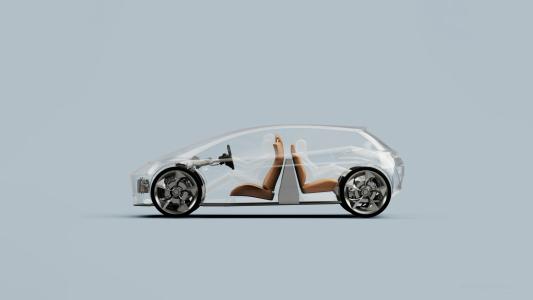This article is an installment of The Future Explored, a weekly guide to world-changing technology. You can get stories like this one straight to your inbox every Thursday morning by subscribing here.
Last week, Luminar gave its first live demo of Iris, the lidar tool for cars that aims to make the cars of the future “uncrashable.”
The system will begin rolling out on select vehicles, including on the Volvo XC90, in late 2022. The company also introduced “Blade,” a speculative design for how semi- and fully autonomous vehicles will become road-ready.
Luminar believes that its latest technologies herald a future where cars can anticipate and avoid almost any collision.
Cars with frickin’ lasers: Lidar is a sensor that uses lasers to identify objects and measure the surrounding environment in 3D.
First developed in the 1960s, the technology has emerged as a possible key to ensuring that autonomous vehicles actually work — enabling them to create 3D views of the road in real-time, and quickly identify other cars, pedestrians, and cyclists, without the aid of a (potentially glitchy) wireless connection.
Some critics, like Elon Musk, have claimed lidar might not be necessary in autonomous vehicles, though according to a Bloomberg report, Tesla is now conducting tests with Luminar sensors.
Test Drive: In Luminar’s demo, Iris was installed in the roof of a Toyota RAV4. The test vehicle was then driven around Manhattan (by a human driver) while the lidar capabilities were shown off to passengers on flat-screen monitors in the car.
Luminar, founded in 2012, went public last year in a $3.4 billion deal. One of the company’s breakthroughs, justifying its high valuation, is that its sensors have a range of 250m (about 820 ft). It relies on longer waves of light than other lidar systems, which allows it to recognize tricky objects, like dark-colored cars or fast-moving animals, within this 250m range. For detecting larger and brighter objects, Russell claims the system has a range of 500m, or nearly a third of a mile.
Unlike earlier, bulky lidar setups on cars (think Google Street View cars), the Iris is described as “almost flush with the roof, with a strip of gleaming gold peaking out.” Russell hopes to one day sell Iris for as little as $500, a dramatic reduction from the five-figure price tags of lidar devices in days past.
As part of Studio Day, Luminar also shared Blade, designed in partnership with NewDealDesign, which offers their view of how Luminar technology will be seamlessly integrated into AVs in the future. Images depict vehicles with a fully integrated housing system for as many as four Iris sensors — along with other sensors likely to appear in such a vehicle, like cameras and radar.
A long road: But don’t start making plans to nap on your commute anytime soon. Russell explains that the road to fully autonomous vehicles is a long (and winding) one, with many challenges still in store before we get to the robotaxis that companies like Waymo and Aurora are attempting to build.
The 26-year-old CEO explained that earlier speculation of near-future Level 5 self-driving cars — vehicles that don’t require human attention under any circumstance — was a bit too overeager.
Luminar is trying to integrate systems into passenger vehicles that gradually increase a car’s autonomous capabilities. Russell shares the vision of a future with robotaxis on the road, but thinks the intervening time will involve incremental changes that build on each other — and that lidar is at the core of that process.
“I think there’s going to be an evolution, not a revolution, to robotaxis,” Russell said.
